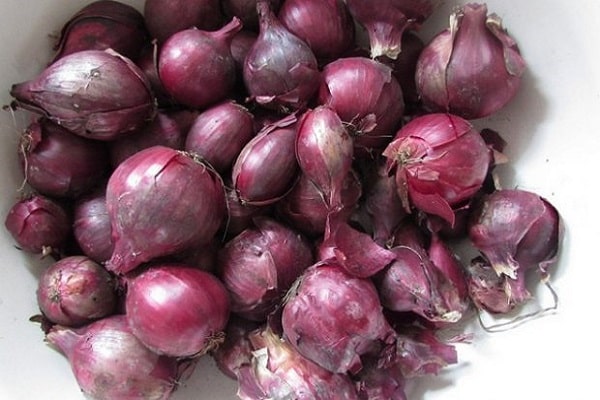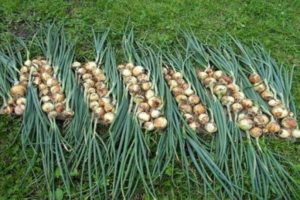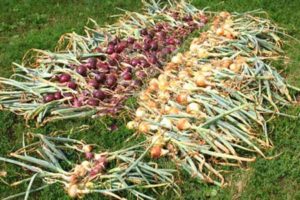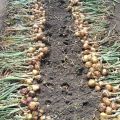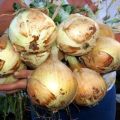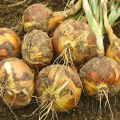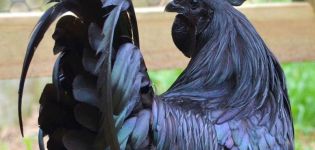Description of the Carmen onion variety, features of cultivation and care
For those who like sweet reds onion varieties, Carmen onions are on the market. He comes from Holland and has recently appeared in Russia. But the gardeners already liked it for the taste, color and ease of growing. A detailed description of the variety, cultivation rules and reviews of those who have already grown Carmen on their plots, we will consider below.
Description of the variety
The variety has recently appeared in Russia, bred by Dutch breeders and is successfully grown in the near and far abroad. It is used by amateur gardeners and large vegetable producers.

The variety is intended for cultivation throughout Russia, but grows best in the central and northern regions. It takes only 3 months from planting small heads in the ground to harvesting. During this short period of time, heads weighing up to 120 grams grow from a turnip.
The onion is double-edged, compact, the feather grows up to 30 centimeters long. The bulb is round, some of the heads are flattened, the pulp is of medium density. The color of the scales is burgundy, in places purple. The pulp is white with a purple tint, medium density.
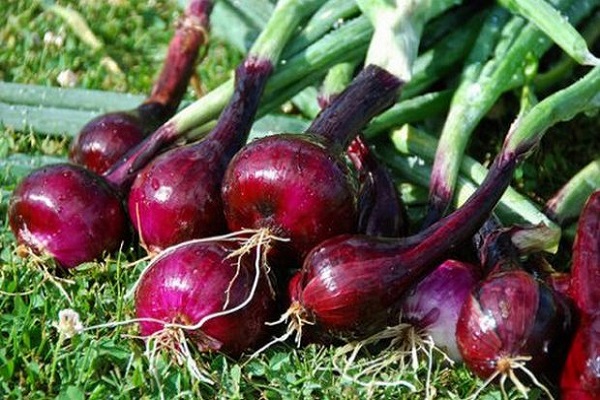
The taste of the heads is without pronounced bitterness, sweetly spicy, with a special taste and aroma. The variety is suitable for fresh use, salads, marinades. Often this variety is used on an industrial scale, as it tends to be stored for a long time.
Positive qualities of the Carmen bow
Gardeners appreciate the variety for its positive qualities:
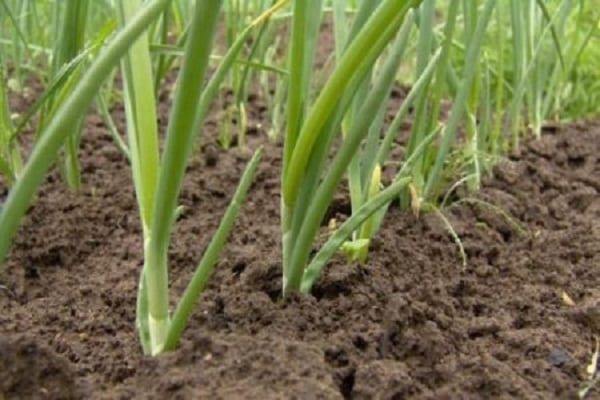
- high yield;
- excellent taste;
- ease of growing;
- excellent presentation;
- keeping quality.
Among the advantages, judging by the description of the Carmen onion variety, resistance to droughts and changes in weather conditions is noted. Onions will form easily in humid and cold environments and in warm, dry summers.
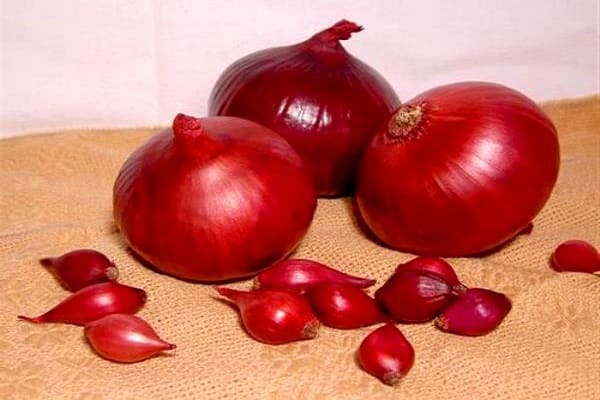
Growing Carmen Onions
Onions are commonly grown in three ways.
- In two seasons. At the same time, in the first season, seeds are planted on the turnip, in the second - on the head.
- A turnip bought in a store on the heads.
- Seeds on the heads.
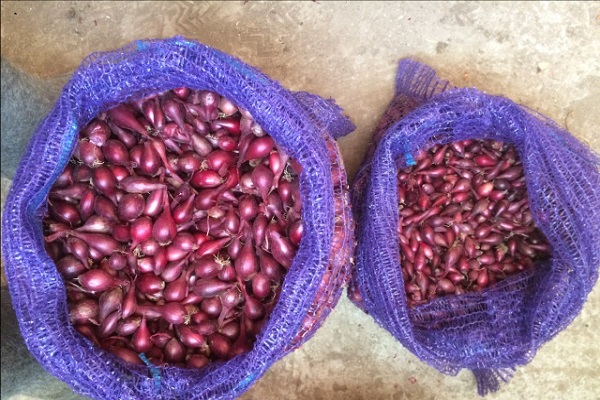
If you intend to plant seeds on a turnip in the first year, then in the fall you need to collect material from the arrows of last year's onion. In this case, several arrow bulbs are left for seeds, and then, at technical maturity, are harvested for further cultivation. If the seeds were purchased in a store, then we skip the first item.
Sowing seeds is done in autumn or spring. To get the seed in the spring, you need to plant it in the fall.

Choosing a seat for landing
The onions should grow in a sunny location with no wind. It is also necessary to provide for the absence of flooding and stagnation of water, otherwise the heads will rot in wet soil. Light sandy soils without strong acidity are suitable for planting.If the soil in the garden is acidic, dolomite flour or lime should be added to reduce the acidity level. The beds are prepared in autumn by removing weeds from the beds, applying compost or manure and digging. During the winter, the soil will absorb nutrients and become more fertile.
Since the weather is warmer in the southern regions, there you can grow heads immediately with seeds. In the northern regions - through seedlings. In this case, the seedlings are prepared 65 days before planting on the main growth site.
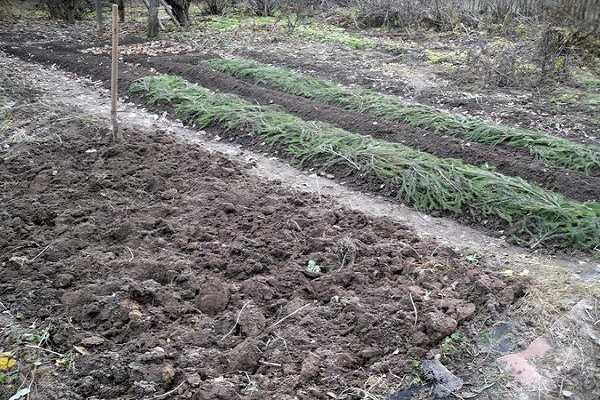
Sowing onions
Sowing of onions, regardless of the type of seed material, is carried out in warm sunny weather. At the same time, the temperature in the soil should range from 16 degrees and above. If night frosts are promised, then the beds are covered with film material. The film needs to be removed during the day.
Seeds or sets are planted 20 centimeters between plants and 30 centimeters between rows. On the garden bed, stripes are drawn with a rake to a depth of 10 centimeters, spilled with warm water, seeds are planted, the rows are sprinkled with soil so that the furrows are visible. Otherwise, it is inconvenient to water.

Planting care
The characteristic of onions is such that the plants grow well, you need to do the following:
- Watering - carried out so that the soil does not dry out, otherwise the tender seedlings will wither and dry out. You also need to avoid excess moisture. Two weeks before the expected harvest, watering is completely stopped and the onions are allowed to ripen in dry soil.
- Weeding is carried out during the entire growth of plants. When planted with seeds, the grass will stop head formation and there will be no harvest. Since the arrows during seed planting are very small, you need to weed carefully so as not to damage the onion plants.
- Harvesting must be done on time, otherwise the heads will outgrow and will not be stored. Onions are usually harvested at the end of August. But in each region, the collection time is different. Therefore, you need to know when the heads are in adulthood. It is easy to determine: if the arrows stopped forming and lay on the ground, the main part turned yellow, it means that the onion is ripe. If the onion grows by the time of harvest, then the ripening process must be artificially accelerated. To do this, a layer of earth is removed from the heads, and the roots are trimmed or carefully lifted with a pitchfork and torn off the soil. You can stomp around the garden with onions, but this method is dangerous in that you can damage the heads.
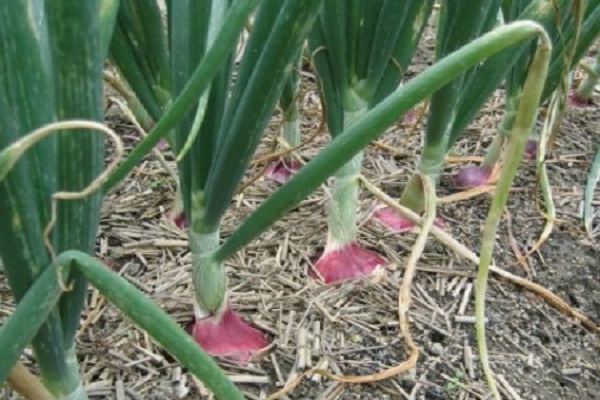
Harvest storage
The harvested crop is dried in the garden for 2-3 weeks. It is important to dry in sunny weather, if the weather forecast reported rain, you need to hide the plants under cover. After complete drying, the onion is cleaned of excess husk and tops. When stored in braids, leave 30 centimeters for weaving. If the onions are stored in boxes, then 10 centimeters of tops are left.
Store in a cool dry or warm place.

Review of reviews about Luca Carmen
Carmen onions have recently appeared on the market, but have already received positive reviews for the variety.
Galina Vasilievna: “I planted Carmen through seedlings, in September I removed excellent large bulbs. The variety is unpretentious in care, you need to water and weed the beds, otherwise the grass will stop the growth of the heads. Carmen is resistant to diseases, so there was no need to spray it with poison. The heads are medium in size, firm, excellent taste, not bitter. I am satisfied with the harvest and now I advise my neighbors to use this variety. "
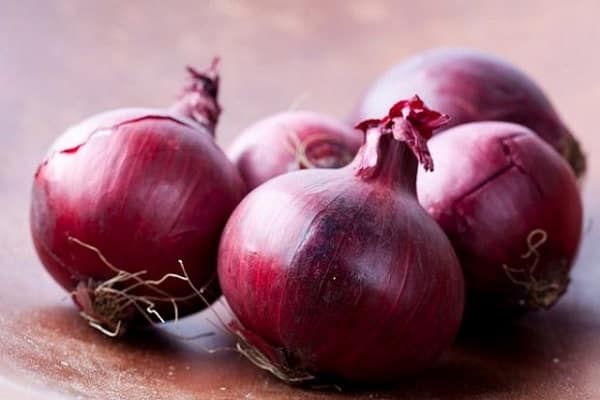
Gennady Iosifovich: “For the second year I have been growing Carmen on my plot, the yield is high. Onions are stored under the floor in nets. Since it is cool there, the heads do not lose moisture. Next year I want to remove the seeds and try to grow seeds for sevok in winter at home, and then in spring I will plant sevok in the garden. "
Marina: “I always plant two beds of onions, one with a white variety, the other with a red variety. Since salads are too spicy from white, I use it for pickling or frying. But the red Carmen goes well with salads from fresh cucumbers and tomatoes.I love this salad, especially when it is made from vegetables grown in my garden. "
